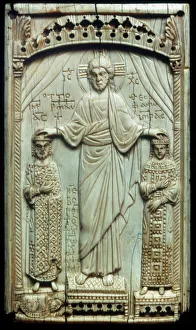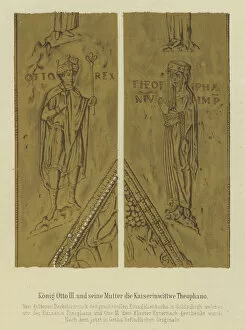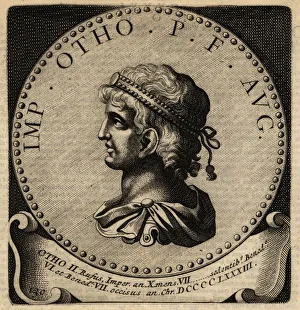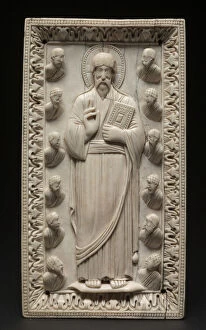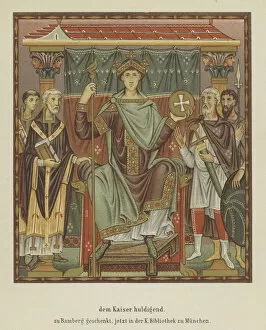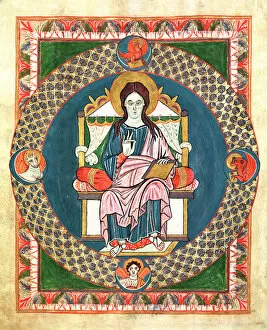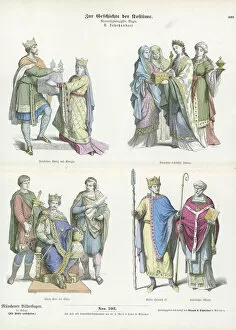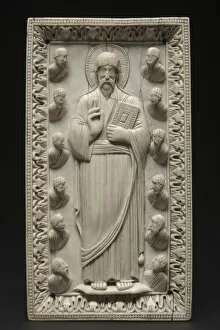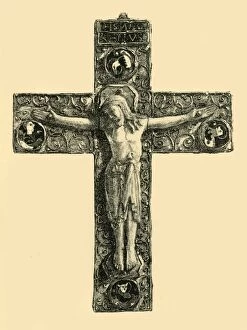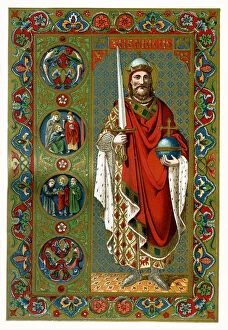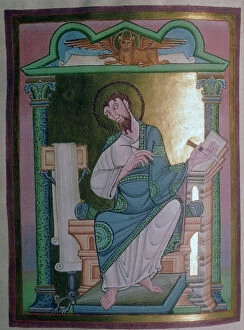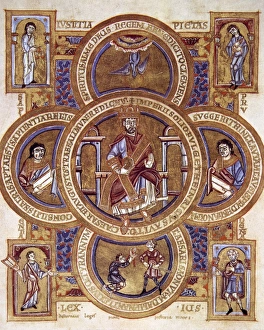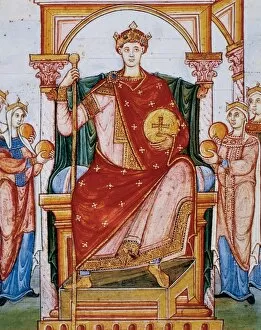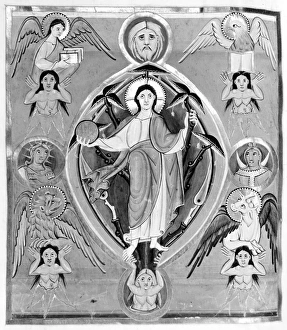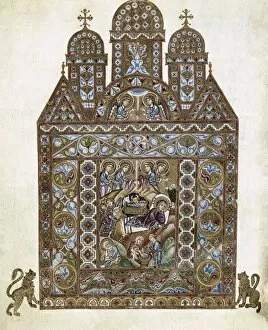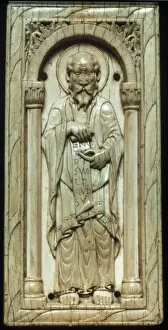Ottonian Collection
The Ottonian dynasty, which reigned over the Holy Roman Empire in the 10th and early 11th centuries, left an indelible mark on European history
All Professionally Made to Order for Quick Shipping
The Ottonian dynasty, which reigned over the Holy Roman Empire in the 10th and early 11th centuries, left an indelible mark on European history. At its helm stood Emperor Otto II and his formidable wife Empress Theophano. Their devotion to Christ was evident through their patronage of exquisite religious art. One such masterpiece is the Gospel Book of Henry II, a miniature marvel crafted during their reign. This intricately detailed ivory creation showcases scenes from the life of Christ, illustrating the deep spirituality that permeated Ottonian society. Otto III succeeded his father as Holy Roman Emperor and continued to uphold his family's legacy. A vibrant lithograph depicts him alongside his mother Theophania, who played a pivotal role in shaping his character and guiding him towards greatness. However, not all moments were filled with glory for these emperors. The passing of Otto II's coffin through crowds of rebellious Italians serves as a stark reminder of the challenges they faced during their rule. Their final resting places also bear witness to their significance in history. The tomb of Henry II and Cunigunde at Bamberg Cathedral stands as a testament to their enduring influence on German culture. In addition to political prowess, Otto III recognized the importance of unity among princes, nobility, and clergy. An engraving captures this harmonious gathering under his leadership – a symbol of stability within an ever-changing empire. Artistic expressions flourished under Ottonian rule too; ivory carvings like "Christ's Mission to the Apostles" depict biblical narratives with remarkable skill. Meanwhile, vellum creations like "The Emperor in Majesty" exude regal splendor while conveying spiritual authority. Another vellum masterpiece portrays Otto III enthroned – an image that epitomizes imperial grandeur blended with divine reverence. Indeed, paying homage to Holy Roman Emperors like Otto III became customary during their reign.

